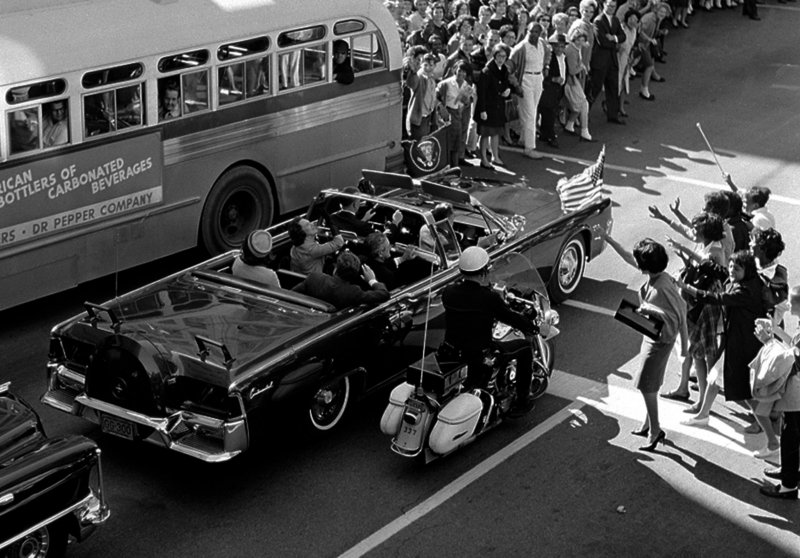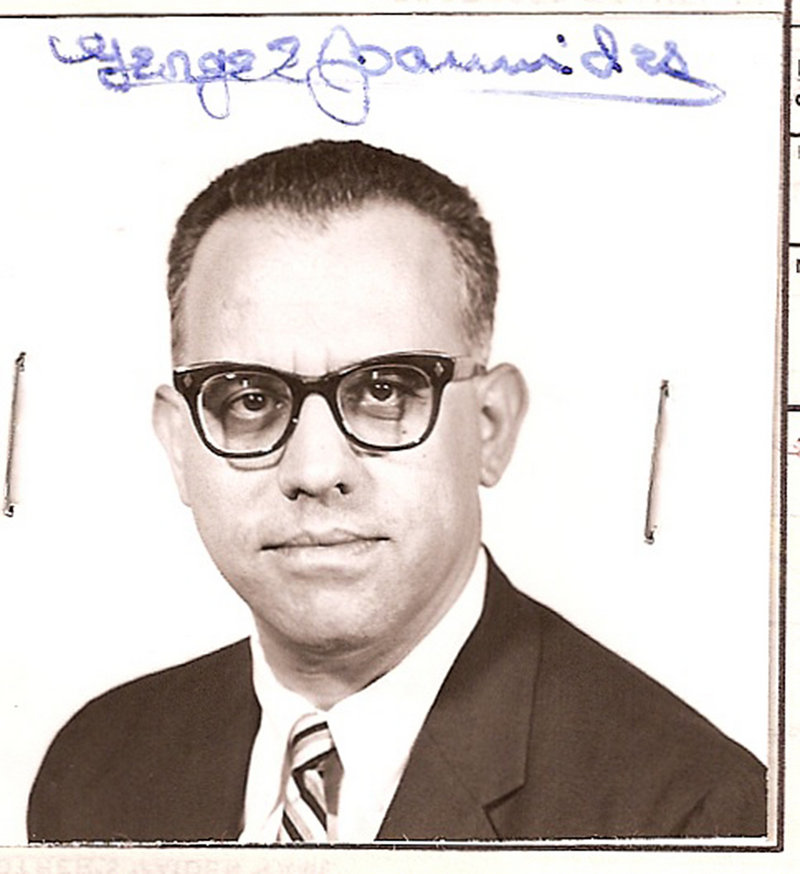Five decades after President John F. Kennedy was fatally shot and long after official inquiries ended, thousands of pages of investigative documents remain withheld from public view. The contents of these files are partially known — and intriguing — and conspiracy buffs are not the only ones seeking to open them for a closer look.
Some serious researchers believe the off-limits files could shed valuable new light on nagging mysteries of the assassination — including what U.S. intelligence agencies knew about accused assassin Lee Harvey Oswald before Nov. 22, 1963.
It turns out that several hundred of the still-classified pages concern a deceased CIA agent, George Joannides, whose activities just before the assassination and, fascinatingly, during a government investigation years later, have tantalized researchers for years.
“This is not about conspiracy, this is about transparency,” said Jefferson Morley, a former Washington Post reporter and author embroiled in a decade-long lawsuit against the CIA, seeking release of the closed documents. “I think the CIA should obey the law. I don’t think most people think that’s a crazy idea.”
Morley’s effort has been joined by others, including G. Robert Blakey, chief counsel for a House investigation into the JFK assassination in the 1970s. But so far, the Joannides files and thousands more pages primarily from the CIA remain off-limits at a National Archives center in College Park, Md.
Others say the continued sealing of 50-year-old documents raises needless questions in the public’s mind and encourages conspiracy theories.
“There is no question that in various ways the CIA obfuscated, but it may be they were covering up operations that were justifiable, benign CIA operations that had absolutely nothing to do with the Kennedy assassination,” said Anthony Summers, a British author whose sequel to his JFK book “Not In Your Lifetime” will be released this year.
“But after 50 years, there is no reason that I can think of why such operations should still beconcealed,” Summers said.
To understand the attention to the Joannides files, it’s necessary to go back to 1963 and to review what’s known about Oswald that put him on the CIA’s radar.
Oswald was a loner and an enigma even to those closest to him. He was “as difficult to understand as anyone I’ve studied in 35 years as a professional historian,” said David Kaiser, whose 2008 book, “The Road To Dallas: The Assassination of John F. Kennedy,” drew on tens of thousands of documents released in the 1990s.
Still, plenty was learned about Oswald after the shooting in Dallas. And, it’s now clear, he was not unknown to the U.S. government before that.
Assassination investigators learned that Oswald had formed a group in New Orleans in the summer of 1963 that ostensibly supported Cuban leader Fidel Castro. Pamphlets Oswald had in his possession bore an address of an anti-Castro operation connected to a former FBI agent with ties to organized crime, investigators discovered. That and other information has led researchers to believe that Oswald may have been part of a counterintelligence operation to discredit the group he had joined, the Fair Play For Cuba Committee, and that the street scene was a setup.
If so, who would have overseen such an operation?
Declassified documents show that Joannides, while based in Miami, was the CIA case officer for the anti-Castro Student Revolutionary Directorate (DRE), the group involved in the street fracas with Oswald.
What did this all add up to, if anything? Official investigations of the Kennedy assassination were not able to provide complete answers.
COMMISSION NOT INFORMED
The Warren Commission, which concluded in 1964 that Oswald acted alone and was not part of a conspiracy, was never told about the CIA’s possibly relevant anti-Castro activities, despite the fact that former CIA director Allen Dulles was a Warren Commission member.
Warren Commission staff counsel Burt Griffin, now a retired judge, calls it “an act of bad faith” by the CIA.
“I think they had an obligation to tell the chief justice (Earl Warren, commission chairman) about that, and then that decision would have been his and the commission’s to make,” Griffin said.
In separate interviews with The Associated Press, Griffin and fellow staff counsel David Slawson stood by the Warren Commission’s conclusions.
Each pointed to a series of personal rejections behind Oswald’s deadly action: Weeks after he made an unsuccessful attempt in Mexico City to get a visa to Cuba, his wife Marina rejected his attempts to reconcile their rocky marriage.
It was during Oswald’s visit, the night before the shooting, to the suburban Dallas home where his wife and two young daughters were staying that he packed up his disassembled Mannlicher-Carcano rifle to take to work the next day, the Warren Commission determined. That next morning, he removed his wedding ring, left his money with his wife, and departed to carry out the assassination.
“If she had taken him back,” Slawson said, “he wouldn’t have done it.”
More complex and sinister theories about his motivation have been offered, of course, some flowing from the release in the 1990s of previously classified documents.
Kaiser, the historian, has postulated that Oswald, long seen as a devout leftist, was in fact being manipulated by right-wing and mob elements in his final months and that his visit to the Cuban and Soviet embassies in Mexico City in the fall of 1963 was part of an attempt to reach Cuba and kill Castro. Release of documents held by those governments could be revealing, Kaiser said.
By the time the House Select Committee on Assassinations convened in the mid-1970s to probe the Kennedy and Martin Luther King Jr. killings, other congressional investigations had exposed the CIA’s activities in the early 1960s, including plots to assassinate Castro.
Those revelations would be overshadowed, however, by the House committee’s JFK conclusion: That sound impulses recorded on the microphone of a Dallas police officer amounted to evidence of a shot from the infamous “grassy knoll” in Dealey Plaza, and thus of an additional gunman besides Oswald firing from a building window.
Kennedy, the committee’s final report said in carefully tempered language, was “probably assassinated as the result of a conspiracy. The committee is unable to identify the other gunman or the extent of the conspiracy.”
Subsequent analyses have cast doubt on the acoustic evidence, and the issue is considered unresolved.
JOANNIDES WAS MIDDLEMAN
That evidence was, of course, only part of the mountains of material considered by the committee, some of it from the CIA. And the CIA’s liaison to the committee was none other than George Joannides, by then retired from the agency.
Blakey, the committee’s chief counsel, recalled how the CIA brought in Joannides to act as a middleman to help fill requests for documents made by committee researchers. “He was put in a position to edit everything we were given before it was given to us,” Blakey said.
But Blakey didn’t learn about Joannides’ past until Morley unearthed it in files declassified years later.
“If I’d known Joannides was the case officer for the DRE, he couldn’t have been liaison; he would have been a witness,” Blakey told The Associated Press. Blakey added: “Do I think I was snookered, precisely like the Warren Commission was? Yes.”
Send questions/comments to the editors.




Success. Please wait for the page to reload. If the page does not reload within 5 seconds, please refresh the page.
Enter your email and password to access comments.
Hi, to comment on stories you must . This profile is in addition to your subscription and website login.
Already have a commenting profile? .
Invalid username/password.
Please check your email to confirm and complete your registration.
Only subscribers are eligible to post comments. Please subscribe or login first for digital access. Here’s why.
Use the form below to reset your password. When you've submitted your account email, we will send an email with a reset code.